
ac6000cw
-
Posts
676 -
Joined
-
Last visited
Content Type
Profiles
Forums
Articles
Posts posted by ac6000cw
-
-
On 12/30/2024 at 2:05 PM, Andrew Reid said:
So although it's nice to have a stacked sensor with decent EVF and 4K/60p, the E-M1X is better value for money and arguably nicer on the ergonomics side too, if you just want to shoot super-steady handheld C4K 24p.
I think the E-M1 iii has most of what the E-M1X has (except the AF subject detect and the extra battery) in a smaller package (the used prices are similar, with the E-M1 iii being a bit higher).
On 12/30/2024 at 2:05 PM, Andrew Reid said:That said I think I saw some OM-1 bodies for around just 1000 euros recently so maybe it's worth considering one too.
They are mostly sub-1000 GBP in the UK (and the latest v1.7 FW update improved the subject-detect AF performance quite noticeably). At that price it's a lot of camera for the money.
On 12/30/2024 at 2:05 PM, Andrew Reid said:The OM-1 has the better EVF for sure, and is smaller, but for some reasons the files look a bit thin in 10bit.
I agree (and the official OMLog400 to Rec709 LUT seems to produce some weird colours - the reds in particular).
In case they might be useful to someone using an OM-1, these are some 10-bit BT2020 OMLog400 to Rec709 LUTs (in nine combinations of colour tint and contrast curve) I've made for my own use: https://drive.google.com/open?id=1-HBUDlPN0C3pQRX5c9Trmh8I3aM9hbiz&usp=drive_fs
I use Vegas Pro for editing (and generating the LUTs) - so no idea how well the LUTs might work in Resolve etc. (and I rarely shot video where people are the main subject, so skin tone accuracy generally isn't important to me)
(...and a big thank you to @Attila Bakos for the great free LUT tools on his Colorizer website )
-
2 hours ago, John Matthews said:
No, they aren't for us- they're for basic consumers.
Exactly.
When I overhear people trying out/discussing/buying cameras in stores and at local camera shows, my impression is that taking still photos is the most important reason for buying a camera. Video hardly gets mentioned - it's a secondary 'nice to have, just in case' feature, not the main reason for buying what is perceived as a 'stills' camera (mostly because MILCs still look like traditional 35mm film cameras, I guess).
What sells reasonably well for camera manufacturers is probably quite different to what interests people on this video-orientated forum (I know that's the case for me).
- John Matthews, Ninpo33 and IronFilm
-
 3
3
-
-
14 hours ago, zlfan said:
the reason why i am interested in c4k is because i read from several sources that c4k 24p is more detailed than uhd 4k on em1 mk iii em1x etc.
if om-1 c4k 60p is as detailed as c4k 24p, it is probably oversampled 4k from the 6k sensor. plus, using 60p to negate the low bit rate codec, finally, this mode can stand up against other big name cameras.
if this works in real world shooting, om-1 is a sleeper, actually. certainly it is not good for low light, the sensor size is m43/43.
The 4k60p is not as detailed as 4k24/25/30p - see https://www.dpreview.com/reviews/image-comparison/fullscreen?attr29_0=omsystem_om1&attr29_1=omsystem_om1&attr72_0=4k_60&attr72_1=4k&attr421_0=10&attr421_1=10&normalization=full&widget=850&x=-0.3659681831889651&y=-0.46405799840375833
10-bit UHD or C4K at 24/25/30p are the most detailed modes. 50/60p is noticeably softer/less detailed. 10-bit also uses the (better) HEVC/H265 codec.
14 hours ago, zlfan said:sandisk uhs i 200 MB/s extreme pro sd card seems fine. i recorded in the above mode for 1 minute. no issue. v90 cards are 10x more expensive. seems no significant advantage.
The Sandisk Extreme (non-Pro version) is also fine for 4k60p in my experience.
-
Is suspect the reasons for leaving out IBIS (other than the Mk 1 didn't have it) are cost and weight e.g. the Sony ZV-10 ii doesn't have it either.
But it's still larger and heavier than the A6700 and X-S20 (which have IBIS), and has the worst battery life out of the three. Nikon seem to be targeting the ZV-10 ii & X-M5 market price area but with the EVF as added value (in exchange for heavily cropped 4k60p, a larger & heavier body and less extensive moderately priced lens choices).
Prices from Wex in the UK:


Size/weight/battery life spec extracts from dpreview.com:
Z50 ii:

A6700:

X-S20:

-
-
8 hours ago, kye said:
There is very little to replace the GX85 if that's your main camera. There's a reason I'm still using it, despite it being a long-superseded camera with quite aging tech. In my setup it's the "when size is more important than image quality" option.
It's not my main camera - that's currently an OM-1.
I've kept the GX85 for use as a travel-cam, fitted with the 14-140mm lens - that combo is smaller and lighter than some smaller sensor 'superzoom' cameras. Its main downside (for me) is the poor quality audio (and no mic jack to work around that). The cropped 4k video isn't ideal either, but at least it's less cropped than the later 20MP sensor GX9 or G100. So (like you) it's my "when size & weight is more important than image and sound quality" M43 camera.
AFAIK the only *reasonably small* hybrid M43 20MP cameras with uncropped 4K are the Oly E-M10 iv & E-M5 iii and the OMDS OM-5 (and they are all taller than the GX85/GX9, and only the E-M5 iii and OM-5 have mic inputs).
I've thought about replacing the GX85 with an E-M5 iii or OM-5, but I already also own an E-M1 iii (the OM-5 is based on it internally) which is a bit larger and 170g heavier but is 'free' to me.
I think what both of us would really, really like the G9 ii/GH7 sensor and processing in a smaller body...
-
If you need the superzoom lens, the combo of A6700 + Sony 18-135mm is actually a bit lighter (and is a slimmer lens) than X-M5 + Fuji 13-135mm, plus it has an EVF. (Assuming https://camerasize.com/ sizes and weights are accurate).
But the Pana 14-140mm is much lighter and smaller than either the Sony or Fuji lens, and has wider zoom range... it's really hard to beat as a 'do almost anything' travel lens.
I've been doing these kind of comparisons myself recently, with a view to possibly buying a *small* MILC with better video support than the GX85 I already own (and one that has a mic input).
Comparison - https://camerasize.com/compact/#910.702,935.426,673.931,ha,t

-
38 minutes ago, Thpriest said:
I'm thinking a Lumix GH5 or G9 with a long compact zoom might be a good option for a second or third ceremony camera. I used my "new" GX80 as a third cam this weekend so I'll see how it cuts with the S5mk2 and S5.
As a G9 owner, note 4k50p/60p recording time is limited to 10 minutes. It's 30 minutes for everything else. G9 is a later design camera than the GH5 with better IBIS and AF (it's also bit larger than the GH5). It can't be powered over USB, but 3rd party dummy battery power adaptors are cheap. IMHO the (oversampled) 1080 50p quality isn't that far behind 4k50p in real world usage (and it can record it in 150Mbps 10-bit 4:2:2), if you need more than 10 minutes continuous recording.
The more recent GH5 ii basically combines the best bits of the GH5 and G9.
As for the 'long compact zoom', the Pana 14-140mm F3.5-F5.6 is an excellent small and light 'superzoom' if you don't mind the variable aperture. Probably my all round favourite M43 lens. The 'much brighter at the long end' 35-100mm F2.8 is also fairly compact, but has more focus breathing.
-
Panasonic has added a new S9 firmware update 1.2 to replace the withdrawn FW 1.1:
QuoteOct. 18, 2024
Ver. 1.2 Improved the stability of firmware updates via Wi-Fi (LUMIX Lab/LUMIX Sync).* Updating to Version 1.2 will improve future firmware update stability for updates performed via Wi-Fi.
* Firmware Version 1.2 also includes the items, functions and features that were included in Version 1.1.
-
Interestingly, in the Optyczne.pl 'Movie Mode Test' of the S9, they found some changes/improvements have been made to the video processing compared to the S5ii, so maybe that will turn up in a firmware update for the S5 ii?
S9 test: https://www.optyczne.pl/94.4-Inne_testy-Panasonic_Lumix_S9_-_test_trybu_filmowego_Jakość_obrazu.html
S5 ii test: https://www.optyczne.pl/70.4-Inne_testy-Panasonic_Lumix_S5_II_-_test_trybu_filmowego_Jakość_obrazu.html
Z6 iii test: https://www.optyczne.pl/91.4-Inne_testy-Nikon_Z6_III_-_test_trybu_filmowego_Jakość_obrazu.html
There are also some downloadable sample clips on the next "Summary and sample videos" page of the tests.
The S5 ii is a 'good value' camera, making the best out of an old, slow (and cheaper) sensor which limits 4K60p to an APS-C cropped region of the sensor.
The Z6 iii is nearly twice the price of the S5 ii and has very recent, much faster, sensor allowing full-frame 4k60p with low rolling shutter (and it supports internal RAW recording).
It's not really a fair comparison.
I had a play (in a camera store) yesterday with an S9 fitted with the APS-C Sigma 18-50mm f2.8 DC DN lens. Quite a nice combination at less than 800g total weight and I thought the handling was OK. As I normally shoot at 50p/60p the S9 would basically be an APS-C video camera for me anyway. Not sure yet if I actually want to buy one (versus other 'compact' possibilities like the ZV-E1, A6700 and ZV-E10ii, which have a much wide range of lenses available) so I think I might sit on the fence for a while and see what happens with the S9 pricing - in what has become quite a 'hot' area of the market.
-
11 hours ago, John Matthews said:
180g and 190 euros. Ouch. Add a tripod and gimbal and you have what the S5ii has integrated into its body, minus the FF sensor and EVF. More and more I'm thinking that the X-M5 is a camera you just take it as it is or you upgrade, but don't get accessories because your final kit will twice the size of the camera with those features integrated, notably the S5ii.
Or just buy an X-S20 instead, which has IBIS and EVF.
- John Matthews, Ninpo33 and MrSMW
-
 3
3
-
On 10/1/2024 at 12:15 PM, maxJ4380 said:
So i am looking at an E-M1 Mark II, new in box been used as a shop display, very low shutter count and new warranty at a price i can afford. The e-m1 iii jumps up a little to steeply for me
Video quality is the same on both E-M1 ii and iii. Video-related differences are basically better C-AF and IBIS on the iii.
Note the E-M1 ii got a major firmware upgrade in June 2019 (to rev 3.0) so if you buy one, check/update the firmware (latest version is rev 3.7). See https://support.jp.omsystem.com/en/support/imsg/digicamera/download/software/firm/e1/ for firmware details.
On 10/1/2024 at 12:15 PM, maxJ4380 said:Couple of people have mentioned om-log to be a bit iffy. That's potentially a problem but since i haven't done much with video. Is it likely to be worse or horribly much worse than what's already on youtube ? I think i would be just another sheeple amongst the herd
'OM Log400' on E-M1 ii & iii is only 8-bit, so isn't as 'gradable' as the video from modern cameras with 10-bit Log. Probably better to shoot in 'Natural' or 'Flat' (low-contrast, but not as low as OM Log).
As for previewing the image before shooting, don't forget that you can connect a large-screen monitor or TV to the HDMI output of the camera, *but* that might not be available when the camera is 'tethered' to a PC.
-
On 9/23/2024 at 3:48 PM, John Matthews said:
I owned the Olympus E-m5ii for about a day. When I saw the moiré coming off that image, it was sent back in a heartbeat. There was no using it for anything video related. Funny that they marketed it for video because it felt like a bad joke. When you can't trust a camera 90% of the time for moiré, it just becomes unusable.
I remember looking at the E-M5 ii for video some years ago (due to it having IBIS, which Pana didn't have at the time). I downloaded a few test clips from reviews, saw how bad the aliasing was and stayed with Panasonic...
On 9/23/2024 at 3:48 PM, John Matthews said:You CAN trust the E-m5 iii, E-m1ii, E-m1iii, and E-m10 iii (and iv), E-PL9, E-PL10, E-P7 and E-M1x (which is the bargain of the century IMO- just a little big). IMO, most of these Olympus cameras seem to produce better images than the cropped 4k images from Panasonic GX85, GX850, GX9, GX8, etc.
I think I'd agree (based on my E-M1 ii & iii versus G85 & GX85 experience), but the GH5 & G9 are at a higher level of quality. especially in 1080p.
On 9/23/2024 at 3:48 PM, John Matthews said:Also, most of the tools seem better.
Yes, video is definitely the 'poor relation' to the stills side on Oly/OMDS cameras (even on the OM-1, which is otherwise a much improved video camera over its predecessors). I'd love to be able to reduce the sharpness in 10-bit video on the OM-1 but you can't (it's close to being over-sharpened) and have a 10-bit 'Flat' or 'Natural' picture profile available. On the other hand, the simple three-level IBIS adjustment and being able to turn on and off magnify/movie tele-converter while recording are really useful.
On 9/23/2024 at 3:48 PM, John Matthews said:Honestly, I'd choose the camera with the best audio; for me, it's the E-M5iii, E-m1ii or iii, E-M1x. All the others don't have audio-in and have crap on-camera audio (get a decent sound recorder).
The on-camera audio is better than the Pana G85 & GX85 (which are particularly bad)...
On 9/18/2024 at 11:27 PM, Andrew Reid said:I also find OM-LOG very iffy... It needs a lot of work to colour correct.
I agree.
The official 'OMSYSTEM_OM-Log400_BT.2020_to_WDR_BT.709_v1.0.cube' conversion LUT seems to produce odd colours, and I've never found any 3rd party LUTs for the OM-1. After a lot of trial-and-error (and learning about LUTs) I made my own OM-Log400 BT.2020 to BT.709 LUT which I use most of the time.
-
If you can live without 4k 50p/60p, the fixed-lens Sony ZV-1 is tiny but only goes up to 4k 30p max and the battery life is terrible (I use one as my 'pocket' video & stills camera):

-
-
On 9/10/2024 at 8:38 AM, Tim Sewell said:
Nice colours there, @ac6000cw! I wonder how a run through Topaz upscaling would look.
I didn't try it with any of the footage in that video, but I have tried a trial version of Topaz in the past on other 'railway' SD DV footage. Basically I found it not much better than using FFMPEG upscaling and sharpening, so I've never convinced myself to buy it.
-
In the UK, I've also found Wex to be quite good for buying and selling used gear - https://www.wexphotovideo.com
But for something quite niche like a Bolex D16, as others have said MPB might be more interested in it (but based on my experience, major used dealer buying prices are about half their typical selling price, depending on demand etc. for the item).
-
49 minutes ago, maxJ4380 said:
The most important consideration for me anyway is the ability to be tethered to the computer for animation work, all the rest is icing on the cake.
Surprisingly, quite a few of the lumix cameras that make it onto the supported page
PanasonicLumix DC-S1 1024 x 768
PanasonicLumix DC-S1R 1024 x 768
PanasonicLumix DC-S1H 1024 x 768
PanasonicLumix DC-S5 1024 x 768
PanasonicLumix DC-S5M2 1024 x 768
PanasonicLumix DC-S5M2X 1024 x 768
PanasonicLumix DC-GH5 1280 x 960
PanasonicLumix DC-GH5S 1280 x 960
PanasonicLumix DC-GH5M2 1280 x 960
PanasonicLumix DC-GH6 1280 x 960
PanasonicLumix DC-G9 1280 x 960
those numbers at the end are for the live view.
I can find some deals for the DC-GH5S at about $1800 Which is about the same for a new E-M1 ii. I'm leaning towards buying new as i'm happier with the thought of some kind of warranty. i have yet to use a warranty card... but i guess i just sleep better at night 🙂
If i save for a couple of more weeks i can stretch it to a new E-M1 II or dc-gh5s or or refurb which is supposed to be like new and has a warranty or i can get a 2ndhand one next week. i'll steer clear of the canon. I'll also have a look at the lumix's as well.
If a Panasonic G9 will do what you want, then at the 2nd hand prices they sell for today it's a steal - better video quality (8 and 10-bit) than any of the Olympus/OMDS cameras I've owned (E-M1 ii, E-M1 iii, OM-1), good IBIS, and 'clean' HDMI output on a full-size connector. Note it can't be powered over USB (only for battery charging), but third-party 'dummy battery' adaptors are fairly cheap - I use my G9 powered by one, connected to a projector for meetings with no overheating issues.
I certainly wouldn't even think about paying $1800 for a new E-M1 ii or DC-GH5S - as MrSMW said, buy an 'as new' or 'excellent' grade used camera from a major dealer that provides a 6 or 12 month warranty and returns if you're not happy with it when it arrives. All the cameras on that Panasonic list (and the E-M1 ii, E-M1 iii and OM-1) are pro-grade cameras so even a cheaper 'well used' example should be fine - my E-M1 iii was bought 'well used' from a dealer, with some deep scrape marks and a couple of (easily replaced) missing port covers, but it works perfectly.
1 hour ago, maxJ4380 said:hevc is that the codec that is hard on computer processors or am i thinking of another codec ?
Yes, it's harder to decode than AVC/H.264, but any decently modern PC/Mac should have hardware decode support in the GPU for it (up to 10-bit 4:2:0 4k at least). Note some of the Panasonic cameras can record 10-bit AVC/H.264 if it's a problem for you.
-
2 hours ago, Andrew Reid said:
I would go for a second hand E-M1 II over either of those.
I agree.
(For the OP) The best quality video mode is 'C4K' (DCI 4096 x 2160) at 24fps - the other 4k frame rates only support UHD which is noticeably softer.
The E-M1 iii is not much more expensive second hand now and has better video C-AF and IBIS. Video quality is the same as the E-M1 ii.
2 hours ago, Andrew Reid said:They are very cheap now and in some ways even better than the OM-1. The sensor readout is more detailed in 4K.
You need to use 10-bit mode on the OM-1 to get the most detailed video - then it at least matches the E-M1 ii/iii C4K level of detail but offers 25 & 30 fps as well as 24 fps (and the UHD is pretty much as good). Downside is that 10-bit is HEVC only and either OM-Log or HLG - no 'normal' picture profiles or adjustments.
8-bit UHD & C4K is about as detailed (i.e. a bit soft) as UHD on the E-M1 ii/iii.
-
36 minutes ago, BTM_Pix said:
I've also ordered an S-Video to HDMI unit to see how it fares being recorded in ProRes on a Hyperdeck.
Poorly, I'm assuming.
I've still got a fair amount of firewire-captured footage from mine - it's OK viewed from a distance (it is interlaced SD video, compressed with an early realtime compression codec, after all).
The first part of the video below (in 4:3) was recorded with my DX100 24 years ago, the second part (from 12:32 onwards) was recorded 5 years later with a Sony TRV33 single-chip camcorder in 16:9. Both have been de-interlaced, stabilized and adjusted (as far as I thought was sensible!). The content is niche nostalgia stuff for railway enthusiasts like me...
-
...and the dpreview news item: https://www.dpreview.com/news/9525732938/canon-announces-the-eos-c80-cinema-camera
-
3 hours ago, Clark Nikolai said:
It's better to do the deinterlacing in software rather than hope the TV or projector hardware does a good job of it. Put the interlace material in a progressive HD timeline, deinterlace, then output that.
I agree (and is what I do - I'd never render to interlaced output today, even if all the source material was interlaced).
I was just pointing out that modern GPUs (and TVs) have very good (and fast)
deinterlacers built-in, so using a GPU-based hardware deinterlacer in the editing software if available is a good, easy way of exploiting that.
-
12 hours ago, PannySVHS said:
So does 720 x 576i translate to 720 x 288p resolution, giving half the resolution of the y-axis?
It's two interlaced (upper & lower) fields per frame, with a field being captured (for 25 frames per second) every 1/50 second. Probably using a 1/100 shutter speed by default to get 180 degree shutter per field.
Normally I deinterlace that to 720 x 576p at 50 fps for editing (but I'm a 50 fps person, not 24/25 fps 😉 ).
A modern adaptive deinterlacer (e.g. in a PC/Mac GPU or modern TV) will try to give you the best combination of resolution and motion smoothness depending on the picture content. So static content should retain the full vertical resolution but fast moving content requires interpolation from a single field or blending from both fields to avoid getting horrible 'comb' effects on edges.
Basically if you play 720 x 576i content on a PC (or Mac etc.) you'll be watching an adaptively deinterlaced version of it. The editing software I use (Vegas Pro) has an option to use the GPU adaptive deinterlacer (as an alternative to simple interpolation from each field or blending) - don't know about Resolve etc. as I don't use it.

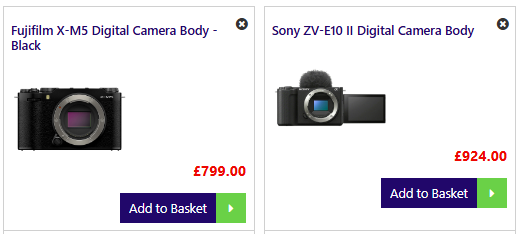

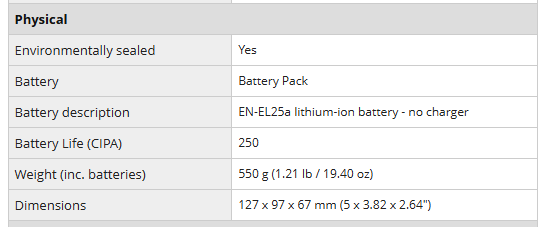
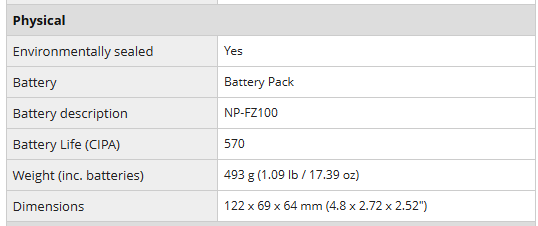
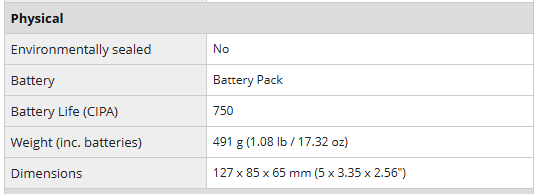
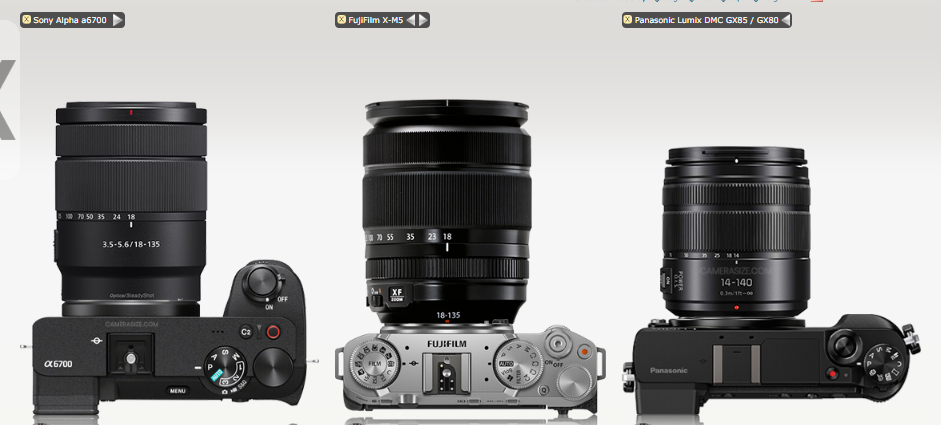

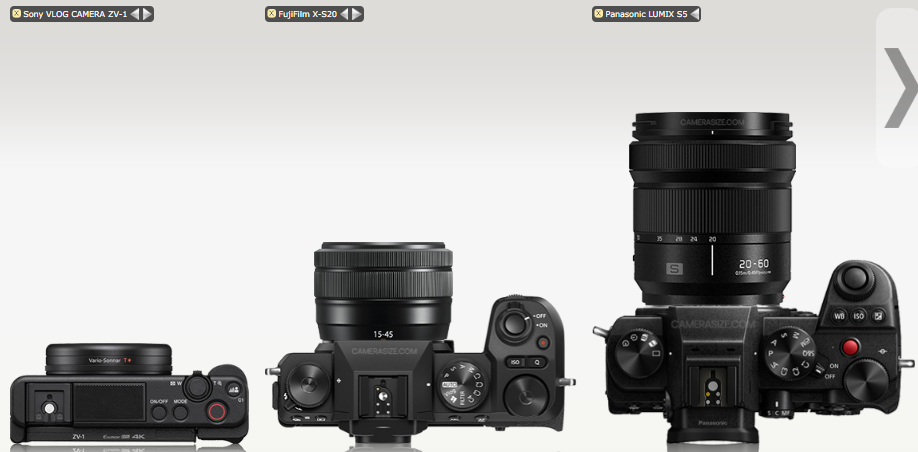
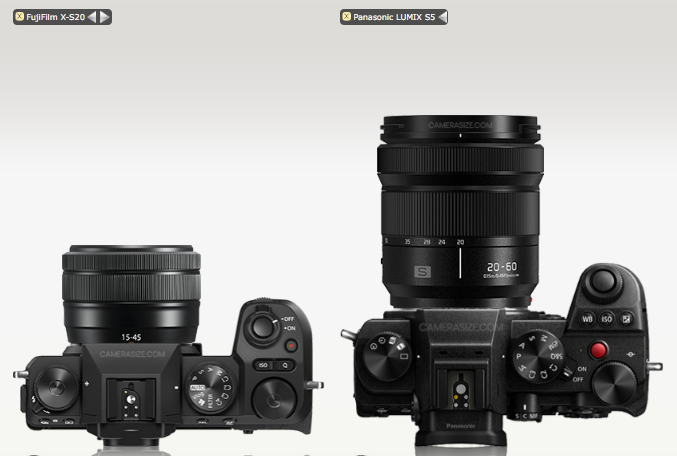

Leica SL3 / SL3-S
In: Cameras
Posted
SL3-s has arrived - https://www.dpreview.com/reviews/leica-sl3-s-initial-review
Spec comparison table from the article - it's seems basically an S5iix in a Leica body (at 2.5x the price).